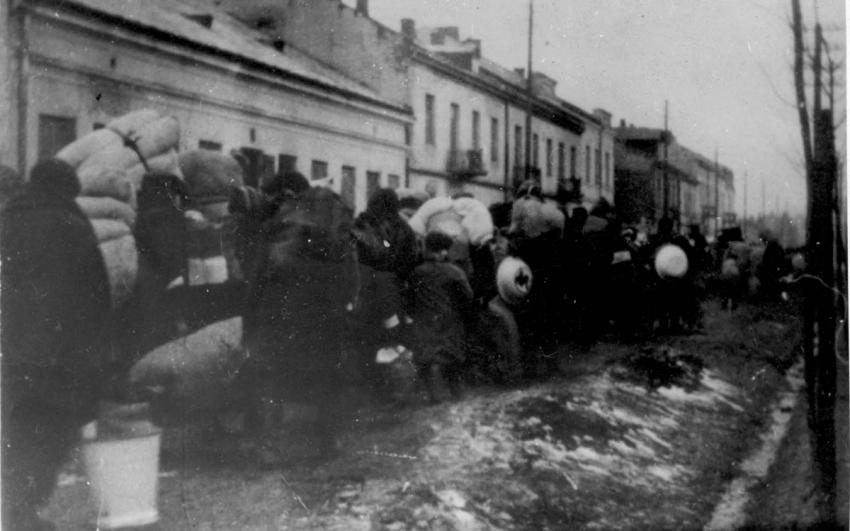The town of Gora Kalwaria is situated on the banks of the Vistula River, some 40 km southeast of Warsaw. Between the two World Wars, Gora Kalwaria was a world center for Gur Hasidim. Most of its 3,300 Jews made a living in petty trade and crafts. Some were artisans, and some were peddlars in the town and the surrounding villages. Many made a living providing supplies and services to the court of the
Chief Rabbi of Gur. Some made clothes for the Hassidim and some supplied food. Wagon owners transported the Hassidim to and within the town, porters carried their belongings, and apartment owners rented out their apartments to Hassidim, especialy during the High Holidays, when thousands of Hassidim would come to the town.
The Jews of Gora Kalwaria established self-help organizations and charitable institutions, and employed a town rabbi and Bet Midrash as well as those of the Gur Hassidim. Until 1930, the community committee was comprised entirely of Agudat Israel members. In 1931, there was a change, and most of the members elected were Zionists, artisans, and people not affiliated to any party. In 1936, the leadership of the community was divided equally between the Zionists and the Agudat Israel members. During this period, branches of Zionist organizations and youth movements were opened, as well as a Hachshara (pioneer training) kibbutz, called "Achva". Most of the Zionists in the town were socialists. They maintained a library, sports and drama clubs. There was also a branch of the Bund and the "Zukunft" youth organization, and a branch of Folkists – non-Zionist Jews who aspired for Jewish cultural autonomy in Poland.
In the 1930s, antisemitism struck a blow to Jewish businesses. The Polish government preferred to patronize Christian Polish suppliers. In addition, Jewish peddlars were frequently beaten and robbed when they travelled outside Gora Kalwaria to work.
On 8 September 1939, the Germans occupied Gora Kalwaria. Many Jews who had fled the town during the battles returned to occupied Poland to find that they had been robbed. The Chief Rabbi of Gur's court was also robbed. The Jews were forbidden to trade, and their income source dwindled. Hundreds of refugees arrived in the town, and the plight of the Jewish residents deteriorated.
Hundreds of Jews were seized for forced labor on a daily basis. A Judenrat was established in January 1941 as per German orders, chiefly responsible for supplying the Germans with Jews for forced labor.
In February, the Jews were confined in a sealed ghetto, to which Jews from neighboring villages and refugees from other towns were also brought. German persecution took a turn for the worse. In the first half of 1940, the Judenrat maintained a soup kitchen with donations from the town's Jews. Every day, 1,200 meals were distributed there.
In late February 1941, some 3,000 Jews from Gora Kalwaria were deported to the Warsaw ghetto within two days. They were assembled in the town market square, and from there, were marched to the train station carrying a few clothes and some food. Those who tried to hide and didn't report for the deportation, were shot, this also being the fate of the sick and feeble.
The deportees were brought to the Warsaw ghetto, where they were refugees amongst the starved and disease-ridden local population. In the course of 1941, hundreds of refugees from Gora Kalwaria perished in the Warsaw ghetto. Those who did not succumb to starvation and disease were deported to the Treblinka extermination camp in the Great Deportation in the summer of 1942.
Yad Vashem Photo Archives, 1691







